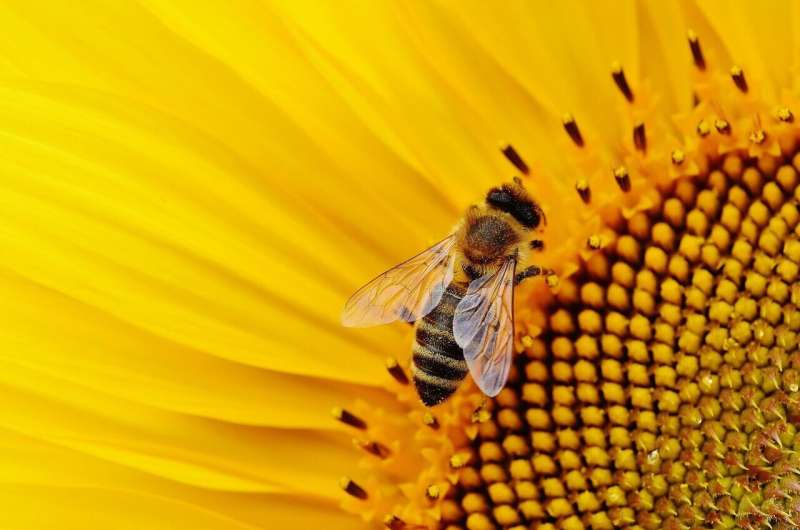Credit: CC0 Public Domain
A team of researchers affiliated with multiple institutions in the U.S., has found adding sodium to floral nectar increased both visits by pollinators and their diversity. In their paper published in the journal Biology Letters, the group describes how they added sodium to the nectar of several plants and set them in a meadow and then watched how the local pollinators reacted to them.
Prior research and anecdotal evidence has shown that humans and many other animals prefer some foods that have elevated levels of sodium in them. In this new effort, the researchers wondered if that might be the case with insects that pollinate flowers. To find out, they placed potted flowers with added sodium in a meadow on the campus of the University of Vermont and then recorded visits by pollinators.
More specifically, they purchased several potted flowering plants representing five plant species. Each was kept in a greenhouse for a period of time before being transferred to the meadow. Prior to being moved, the researchers added artificial nectar to all of the plants—half were as purchased, half had elevated levels of sodium. The plants were then carried to the meadow where they were set on the ground, still in their pots. The researchers then filmed the pollinators as they visited both the plants they placed in the meadow and those around them—for a month, back in 2019. They then later counted the number of pollinators that visited the plants, noting also which sort of pollinators visited.
In looking at their data, they found that the plants with the added sodium received approximately twice as many visits as the other potted plants and those growing naturally in the meadow. They also found that the plants with added sodium received more types of pollinators (which included bees, butterflies and flies) than the other plants.
The researchers suggest their findings indicate that pollinators can be more highly drawn to plants that have elevated levels of sodium—a finding that might become important as the numbers of pollinators drop due to human activities, including climate change. They further note that some prior work has suggested that some flowering plants may experience lowering levels of sodium as water cycles change—an event that could make it harder for them to attract pollinators.
More information: Carrie J. Finkelstein et al, Sodium-enriched floral nectar increases pollinator visitation rate and diversity, Biology Letters (2022). DOI: 10.1098/rsbl.2022.0016
Journal information: Biology Letters
© 2022 Science X Network
























